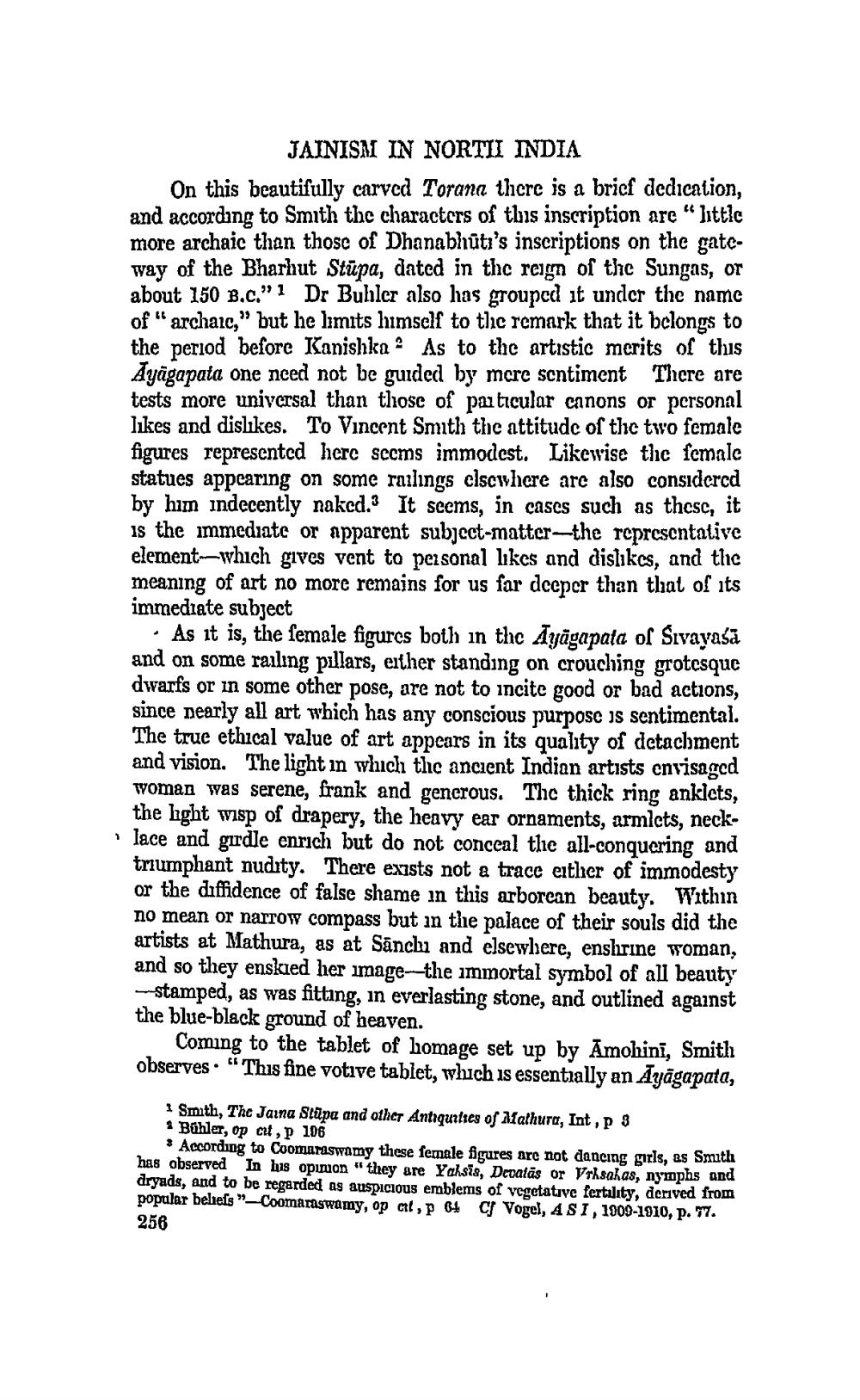________________ JAINISM IN NORTII INDIA On this beautifully carved Torana there is a brief dedication, and according to Smith the characters of this inscription are " little more archaic than those of Dhanabhuti's inscriptions on the gateway of the Bharhut Stupa, dated in the reign of the Sungas, or about 150 B.C." 1 Dr Buhler also has grouped it under the name of "archaic," but he limits himself to thic remark that it belongs to the period before Kanishka As to the artistic merits of thus Ayagapata one need not be guided by more sentiment There are tests more universal than those of particular canons or personal likes and dislikes. To Vincent Smith the attitude of the two female figures represented here seems immodcst. Likewise the female statues appearing on some railings clscwhere are also considered by him indecently naked. It seems, in cascs such as thesc, it is the immediate or apparent subject matter the representative element-which gives vent to personal likes and dislikes, and the meaning of art no more remains for us for deeper than that of its immediate subject - As it is, the female figures both in the Ayagapata of Sivayasa and on some railing pillars, eather standing on crouching grotesque dwarfs or in some other pose, are not to incite good or bad actions, since nearly all art which has any conscious purpose is sentimental. The true ethical value of art appears in its quality of detachment and vision. The light in which the ancient Indian artists envisaged woman was serene, frank and generous. The thick ring anklets, the hght wisp of drapery, the heavy ear ornaments, armlets, necklace and girdle enrich but do not conceal the all-conquering and triumphant nudity. There exists not a trace either of immodesty or the diffidence of false shame in this arborcan beauty. Within no mean or narrow compass but in the palace of their souls did the artists at Mathura, as at Sanchi and elsewhere, enshrine woman, and so they enskied her image--the immortal symbol of all beauty stamped, as was fitting, in everlasting stone, and outlined against the blue-black ground of heaven. Coming to the tablet of homage set up by Amohini, Smith observes. This fine votive tablet, which is essentially an Ayagapata, 1 Smith, The Jaina Stupa and other Antiquities of Mathura, Int, p 3 Buhler, op cit, p 106 * According to Coomaraswamy these female figures are not dancing girls, as Smith has observed In bus opimon " they are Yahsis, Depatas or Vrhsakas, nymphs and dryads, and to be regarded as auspicious emblems of vegetative fertility, derived from popular beliefs "-Coomaraswamy, op art, B4 Cf Vogel, 4ST, 1909-1910, p. 77. 256




